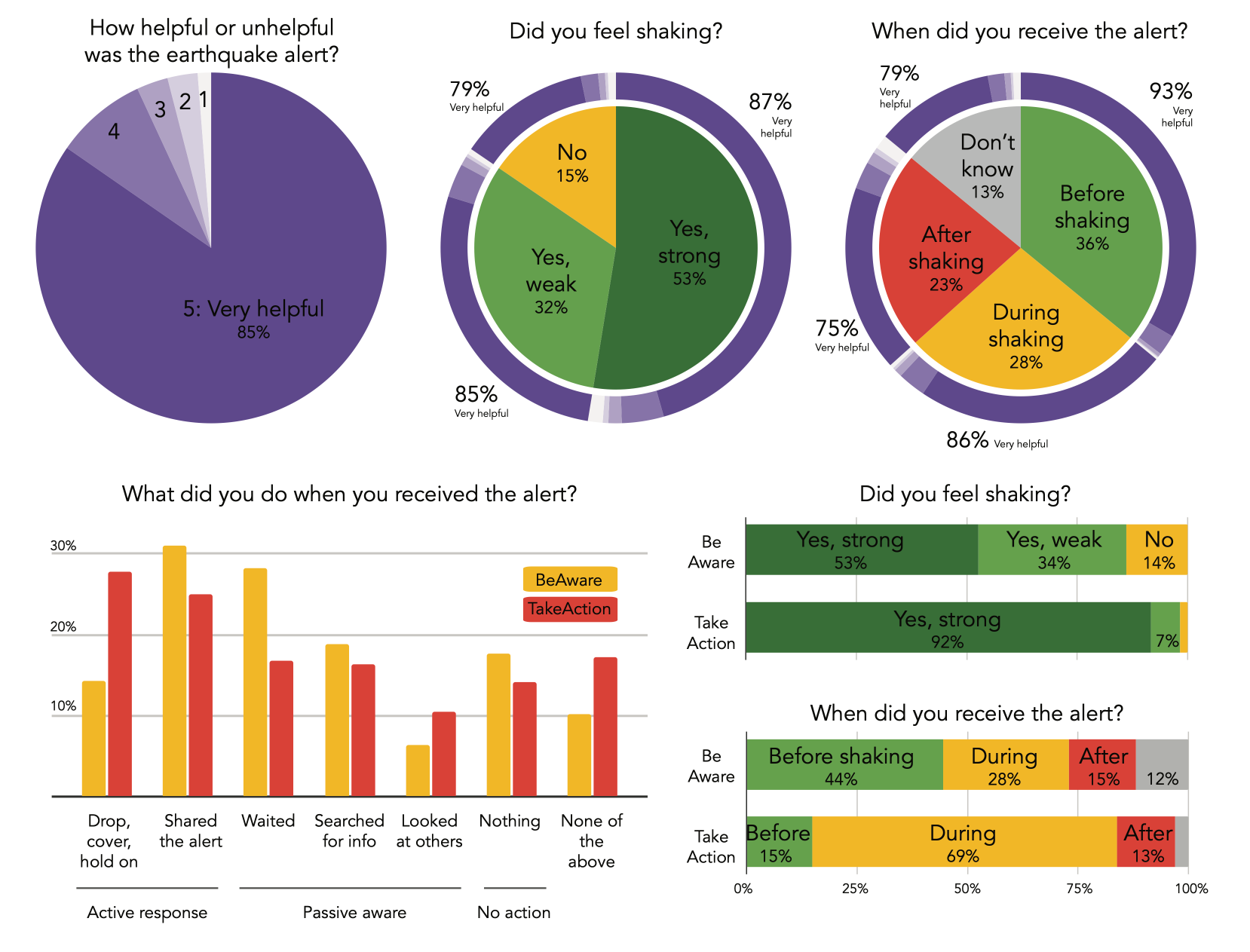The global network of Android smartphones makes a useful earthquake early warning system, giving many users precious seconds to act before the shaking starts. These findings, which come from researchers at Android’s parent organization Google, are based on a three-year-long study involving millions of phones in 98 countries. According to the researchers, the network’s capabilities could be especially useful in areas that lack established early warning systems.
“By using Android smartphones, which make up 70% of smartphones worldwide, the Android Earthquake Alert (AEA) system can help provide life-saving warnings in many places around the globe,” says study co-leader Richard Allen, a visiting faculty researcher at Google who directs the Berkeley Seismological Laboratory at the University of California, Berkeley, US.
Traditional earthquake early warning systems use networks of seismic sensors expressly designed for this purpose. First implemented in Mexico and Japan, and now also deployed in Taiwan, South Korea, the US, Israel, Costa Rica and Canada, they rapidly detect earthquakes in areas close to the epicentre and issue warnings across the affected region. Even a few seconds of warning can be useful, Allen explains, because it enables people to take protective actions such as the “drop, cover and hold on” (DCHO) sequence recommended in most countries.
Building such seismic networks is expensive, and many earthquake-prone regions do not have them. What they do have, however, is smartphones. Most such devices contain built-in accelerometers, and as their popularity soared in the 2010s, seismic scientists began exploring ways of using them to detect earthquakes. “Although the accelerometers in these phones are less sensitive than the permanent instruments used in traditional seismic networks, they can still detect tremors during strong earthquakes,” Allen tells Physics World.
A smartphone-based warning system
By the late 2010s, several teams had developed smartphone apps that could sense earthquakes when they happen, with early examples including Mexico’s SkyAlert and Berkeley’s ShakeAlert. The latest study takes this work a step further. “By using the accelerometers in a network of smartphones like a seismic array, we are now able to provide warnings in some parts of the world where they didn’t exist before and are most needed,” Allen explains.
Working with study co-leader Marc Stogaitis, a principal software engineer at Android, Allen and colleagues tested the AEA system between 2021 and 2024. During this period, the app detected an average of 312 earthquakes a month, with magnitudes ranging from 1.9 to 7.8 (corresponding to events in Japan and Türkiye, respectively).
For earthquakes of magnitude 4.5 or higher, the system sent “TakeAction” alerts to users. These alerts are designed to draw users’ attention immediately and prompt them to take protective actions such as DCHO. The system sent alerts of this type on average 60 times per month during the study period, for an average of 18 million individual alerts per month. The system also delivered lesser “BeAware” alerts to regions expected to experience a shaking intensity of 3 or 4.
To assess how effective these alerts were, the researchers used Google Search to collect voluntary feedback via user surveys. Between 5 February 2023 and 30 April 2024, 1 555 006 people responded to a survey after receiving alerts generated from an AEA detection. Their responses indicated that 85% of them did indeed experience shaking, with 36% receiving the alert before the ground began to move, 28% during and 23% after.

Principles of operation
AEA works on the same principles of seismic wave propagation as traditional earthquake detection systems. When an Android smartphone is stationary, the system uses the output of its accelerometer to detect the type of sudden increase in acceleration that P and S waves in an earthquake would trigger. Once a phone detects such a pattern, it sends a message to Google servers with the acceleration information and an approximate location. The servers then search for candidate seismic sources that tally with this information.
“When a candidate earthquake source satisfies the observed data with a high enough confidence, an earthquake is declared and its magnitude, hypocentre and origin time are estimated based on the arrival time and amplitude of the P and S waves,” explains Stogaitis. “This detection capability is deployed as part of Google Play Services core system software, meaning it is on by default for most Android smartphones. As there are billions of Android phones around the world, this system provides an earthquake detection capability wherever there are people, in both wealthy and less-wealthy nations.”
Read moreSmartphone apps shake up earthquake early-warning systems
In the future, Allen says that he and his colleagues hope to use the same information to generate other hazard-reducing tools. Maps of ground shaking, for example, could assist the emergency response after an earthquake.
For now, the researchers, who report their work in Science, are focused on improving the AEA system. “We are learning from earthquakes as they occur around the globe and the Android Earthquake Alerts system is helping to collect information about these natural disasters at a rapid rate,” says Allen. “We think that we can continue to improve both the quality of earthquake detections, and also improve on our strategies to deliver effective alerts.”









